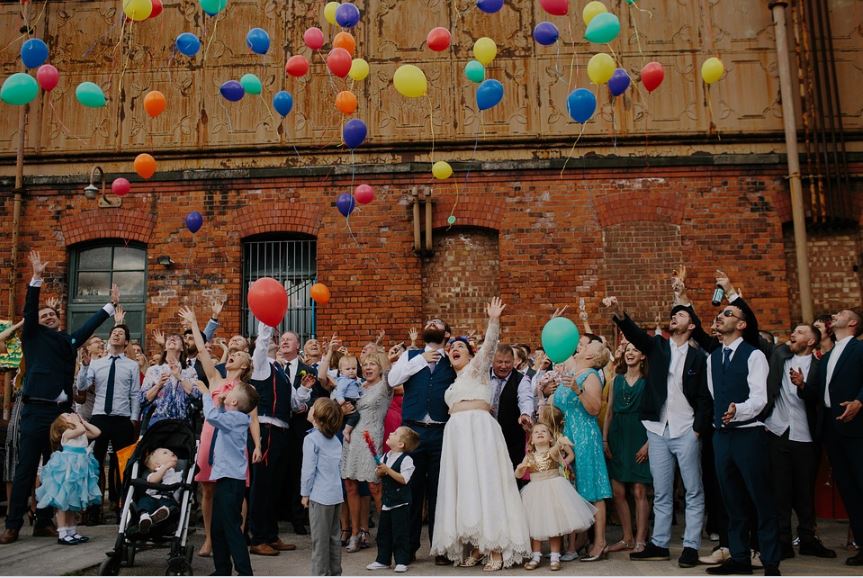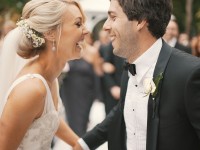You know that wedding photography is an incorporation of many other photographic genres, such as family and group photography, portraits, documentary, event, and sometimes even boudoir photo art. Moreover, the wedding photographer also should know the basics of landscape photography when the location is particularly picturesque.
But besides the art of light and techniques when using a photo camera, every wedding photographer is constantly working with numerous people and their human factor on a daily basis. As a rule, on wedding days, all the guests and newly-weds are having fun and enjoying the special day. Yet, they all want to get the best shots. In this article, you can find wedding photography tips for best posing practices. We will consider a different number of people in a frame and their actions. Keep in mind that while the article about wedding photography tips is mostly for photographers and methods to help them do their work best, you as a part of a wedding party can also learn a wisdom or two to apply during your wedding day.
Wedding photography tips: general posing basics
Mass posing is always complicated, especially if you’re working with non-models. Every person has their body shape and “working” side for photos. For individual photos, you would be able to put them right for a perfect shot. But what can you do if this is a wedding and the bridesmaids are all of different height and appearance? Here is a couple of general pearls of wisdom for you before proceeding to the must-dos:
- Put people half-turned to the camera. If you place everyone parallel to yourself, their figures will seem wider than they are.
- Avoid straight hands at the side. Such a position also makes people seem wider than they really are. It’s better to bend the hands in any way: take something in hands (a bouquet), put them on the hips, intertwine them among all the people in the image, etc.
- Carefully watch men on all your photos. They tend to cross their hands together in the front. That looks awful as if they’re trying to hide something from others. If you spot such a view, kindly advise those individuals to change their posture, for instance, to put a hand(s) in the pocket(s).
- Always match posing to the people in your frame. If you’re shooting bridesmaids, then focus on their curves and beautiful legs by showing them off a little. Straight lines are generally seen as a masculine posing, so emphasizing straight lines is often a more masculine pose.
- Work with all levels. Large wedding photos frequently look flat because photographers put everyone in one line without considering the option of multi-rowing. To create a multilevel picture, you will need chairs to make the middle row seated or to put the farthest row higher. You can also look for some stairs to make it look more natural.
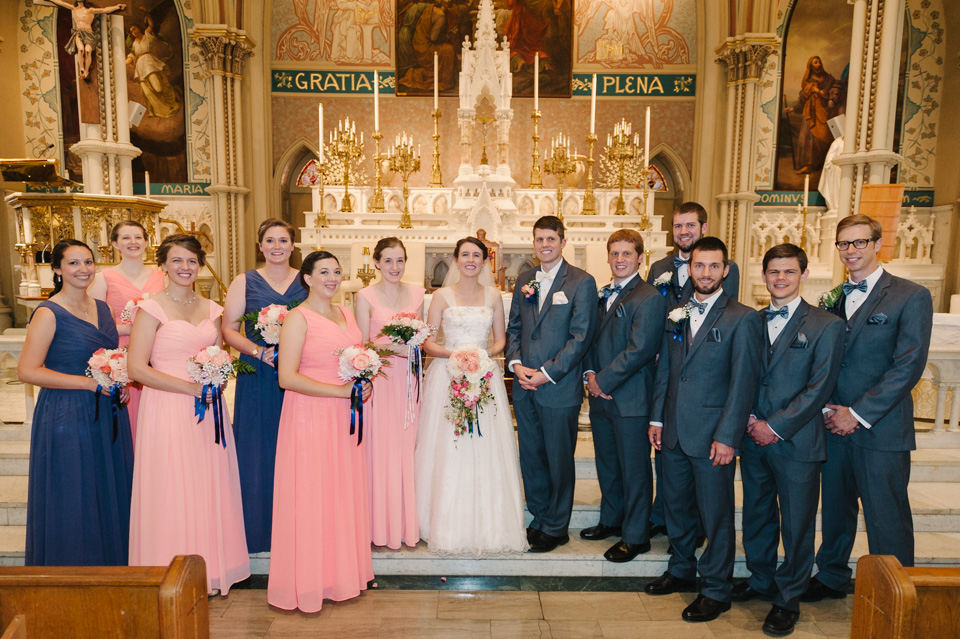
- Include all party members. Very often photographers forget about the smallest members of the event: a flower girl or the youngest groomsmen. They always add some fun and suddenness to every picture and can level unfortunate posing of the older members. So these wedding photography tips include adding kids to your images whenever you can.
- Make no harm to self-esteem. Remember that when you personally address a guest at a party, you might accidentally harm their self-esteem and so destroy the whole mood of the day. If you spot something that looks bad, address the whole crowd altogether. This is especially important with unpleasantly looking chins and bellies. Just direct people to raise their chins a little higher or turn more towards the camera to eliminate such problems completely.
Wedding posing: the wedding party
1. Have a draft
Weddings happen very fast, so frequently you won’t have much time to make a creative pose for a large group of people. This is why you need to have a number of posing options for groups. To do so, come to the location in advance and explore the opportunities you have. Look for the open spaces and uneven landscape, for the stairs to create layers, check also available props that will adjust the height of the whole wedding party.
Remember that wedding photos don’t have to be symmetrical or traditional; you only need to tentatively understand where every party member will go. Don’t pay attention to the small things like hands positioning. Try to add variety into a single group shot to create strong group poses.
And the last tip here: don’t try to recreate a perfect shot from your head. Always leave space for creativity and alternation because every shot may give you some on-the-spot clues for a perfect photo.
2. Lead the shooting
Remember that weddings are all about chattering and enjoying the special day for everyone gathered. So no wonder that people may get excited and forget about posing for you. The major wedding photography tips include being patient, soft, yet persistent. In a loud voice speak over the chatter and ensure that every guest participates in the common shooting process. Lead and try to drive everyone on to stay on schedule. If you see that your speaking up has no effect, then remember that notices about food and drinks (the sooner you’re done, the sooner the guests will get to the dining area) generally work best.
3. Direct everyone into a position
Get the newly-weds in the center, then keep bridesmaids and best men close to them. Once these people are in their places, get the rest of the party gathering around. Of course, don’t try to be extremely insistent here if the height of these party members doesn’t look nice on the photos. However, direct everyone into their places since you are the only one who sees how the final image will look like.
4. Fine-tune the pose
Now it’s time to make those small changes that might ruin the whole picture. Make sure that no one is parallel to the camera, adjust everyone’s hands. Pay attention to the feet as well: bend a couple of knees.
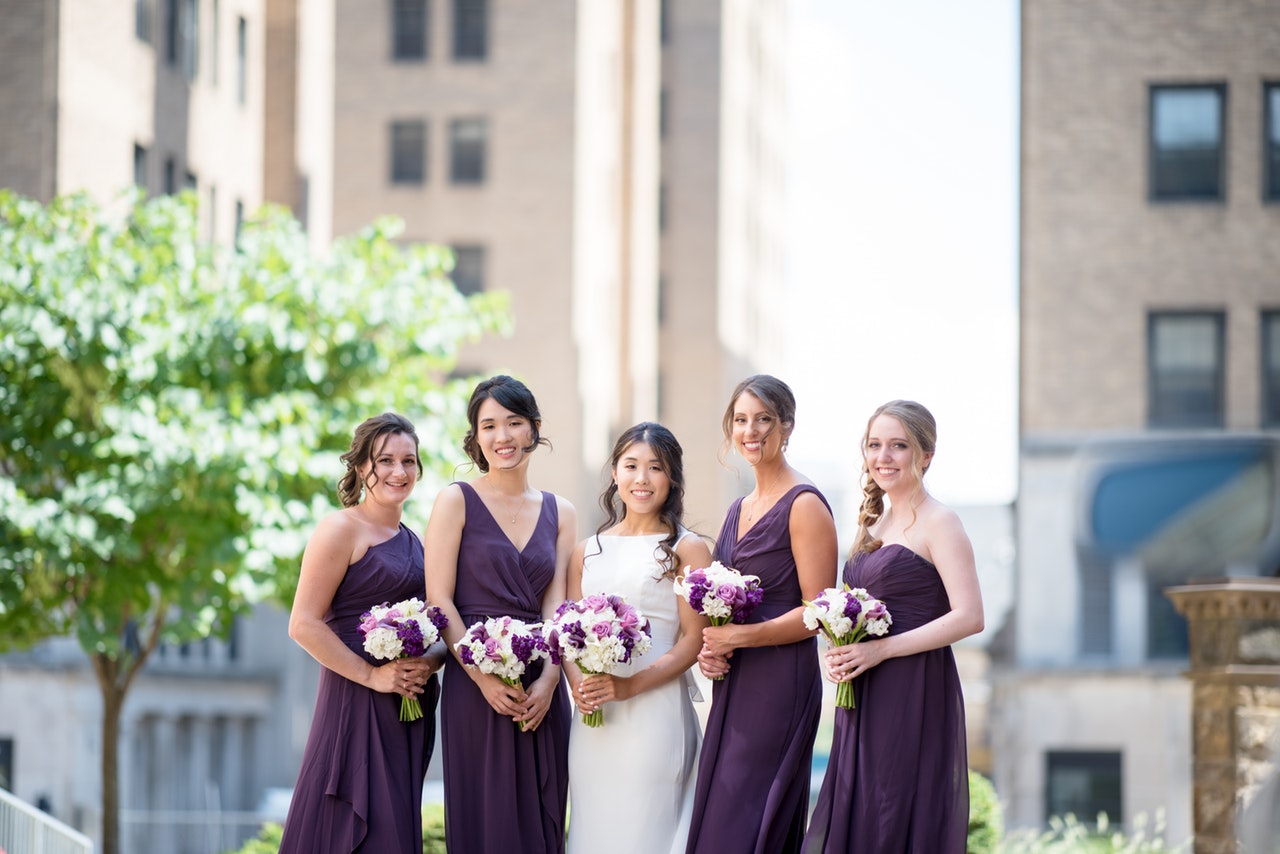
5. Check the whole image
Take the final look at the image you’ve created and ensure that everyone is involved in the photo. Look for the people who might be distracted and looking away from the camera. Check for the cell phones: they are not visible and not in the guests’ hands. Try also to remove sunglasses to make all faces visible. Pay attention to the background once again: there should be no bottles, glasses, bags, and any other objects that might distract from the photo’s focus.
6. Shoot
The shooting of the perfect picture requires numerous takes. Remember that you have a large number of people all of whom wants to have a perfect shot. So your goal is to take many shots from the same angle so that each and every photo member looks perfect: without blinking, open mouth, or some weird mimics. Remember to use a wide aperture in order to keep everyone in focus and a fast shutter speed for sharp images.
7. Make changes
One of the most important wedding photography tips is to always alter your shots. After you shoot several pictures of the same poses and are sure that there will be the perfect photo, ask people to change their poses. It shouldn’t be a complete change of the body movement but rather minor hands positioning or head slant changes.
A few more tips on how to make the mass shot look different
- Change the angle: take a chair or get on the balcony to shoot from a higher angle; you can also move to another side or go farther back.
- Get the newlyweds to the front: get them into the focus and the rest of the party to the background to change the focus.
- Change emotions: get an official shot where everyone looks smiling and then get everyone laugh. Then ask everyone to be serious and instantly make faces – this kind of emotion change is always a winning one.
- Get some action in the shot: let the bride and bridesmaids throw their bouquets or air balloons in the air, or ask everyone to jump for the same reason.
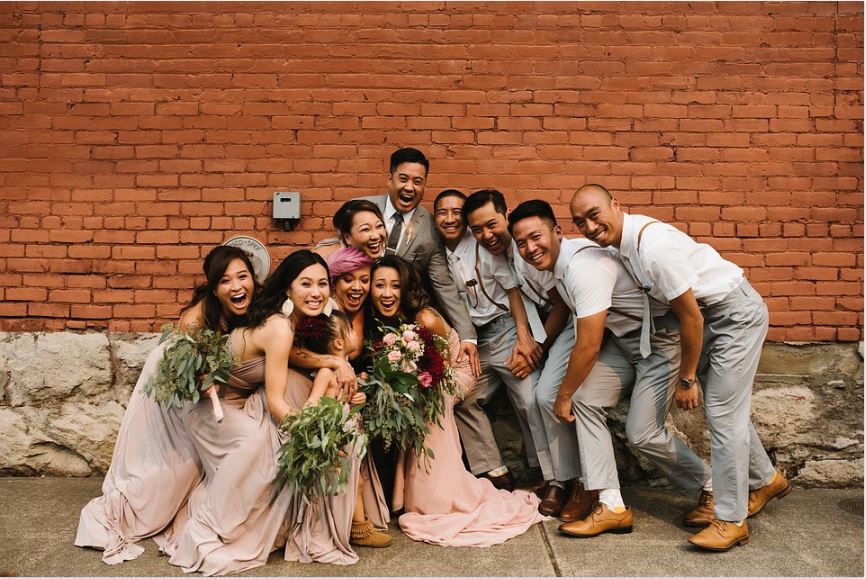
Yes, these are only a couple of useful wedding photography tips that you can incorporate in your work. Remember, however, to begin from a traditional base shot and then continually move to some more relaxed photos. Don’t also forget that each and every shot should already exist in your head so that you can lead the shooting and keep it short for everyone.
